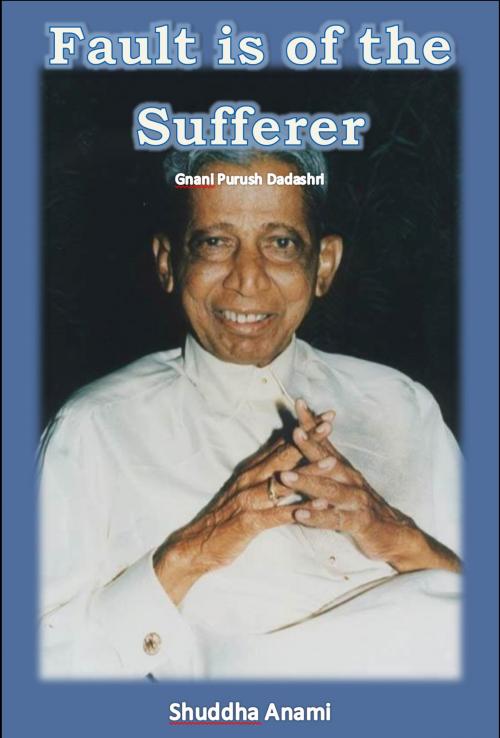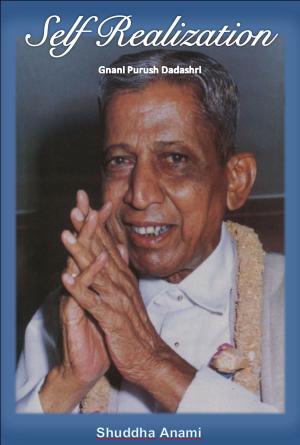Fault is of the Sufferer: Gnani Purush Dadashri
Nonfiction, Family & Relationships, Parenting, Anger, Religion & Spirituality, Inspiration & Meditation, Spirituality| Author: | Shuddha Anami | ISBN: | 9781310202902 |
| Publisher: | Shuddha Anami | Publication: | November 10, 2014 |
| Imprint: | Smashwords Edition | Language: | English |
| Author: | Shuddha Anami |
| ISBN: | 9781310202902 |
| Publisher: | Shuddha Anami |
| Publication: | November 10, 2014 |
| Imprint: | Smashwords Edition |
| Language: | English |
All suffering in life is due to faulty vision. This is especially the case when for no apparent reason, one experiences suffering in life. In practical daily life, whenever one has to suffer any discomfort or pain, the immediate tendency is to find a fault of someone else for this. By blaming others for one's pain, there is a temporary bandaid applied to one's pain, but it is not the solution. Finding faults with others increases one's pain and complicates life even further by creating subtle animosity and account of karma with him or her. Gnani Purush Dadashri attained enlightenment in 1958 in India, and has revealed a phenomenal sutra- an eternal liberating truth- to the world: 'The Fault is of the Sufferer'. Any suffering of pain or pleasure that arises in this life is the result of causes laid in a previous life. No external force is doing this. It is the direct result of faulty vision. When a young couple who have not hurt anyone in this life, have a baby that is born with brain injury, the obstetrician or the hospital is blamed and sued. Why did these healthy parents have a brain compromised baby? When two friends are walking in a farm and in a sudden storm, lightning falls on one of them, killing him, whose fault is it? When a hard working person gets penalized and scolded by his office boss for no apparent reason or misdeed, who is at fault? When a ‘good’ man suffers, whose fault is it?
When no mistake is apparent and suffering ensues, one becomes emotional and repeatedly wonders, where he went wrong. What is my mistake? When no answers come forth, the ‘lawyers’ within take over. They make the argument that indeed there is no fault of mine. The other person is at fault. In the end one becomes convinced that the reason for his suffering is indeed the other person. Thus one’s own faults are covered up and the fault of the other is proved. This starts the chain reaction of karma.
What kind of justice prevails, when you are the judge, you are the defendant and you are also the lawyer? This kind of justice would favor only you, and so you will rule according to what suits you and you will continue to make mistakes and remain bound. The judge within you points out your mistakes. The lawyer within defends that mistake. In doing so, you become bound. For the sake of your liberation, you should find out who is at fault for this suffering. The fault is always of the one who suffers. In the worldly terms it may be considered unjust, but in God's justice, the fault is of the sufferer. No outside judge is required for God's justice.
Gnani Purush Dadashri has given a simple solution that is helpful in every manner to every human being. This is in the form of a sutra (a fundamental statement of liberation): “The fault is of the sufferer.” Who is at fault? Is it the fault of the robber or the one who was robbed? Who is suffering between the two? The fault is of the sufferer. The robber will suffer when he is caught and punished. Today the mistake of the one who has been robbed has been established and that is why he is suffering. Now that he is suffering for his own previous mistake, whom can he blame? From this perspective the other party, the robber is seen as faultless. If you break a china tea set, whom can you blame? If your servant breaks the china, you blame him. This is the way things are. In the home, in the business, at work, everywhere, investigate who is suffering. That person is at fault. The suffering exists as long as there is a fault. Once the faults are gone, no one in this world, no event in this world will have the power to give any suffering to you.
The spiritual science behind this invaluable sutra of Dadashri is uncovered in this little booklet. Application of this truth will solve all puzzles of daily living.
All suffering in life is due to faulty vision. This is especially the case when for no apparent reason, one experiences suffering in life. In practical daily life, whenever one has to suffer any discomfort or pain, the immediate tendency is to find a fault of someone else for this. By blaming others for one's pain, there is a temporary bandaid applied to one's pain, but it is not the solution. Finding faults with others increases one's pain and complicates life even further by creating subtle animosity and account of karma with him or her. Gnani Purush Dadashri attained enlightenment in 1958 in India, and has revealed a phenomenal sutra- an eternal liberating truth- to the world: 'The Fault is of the Sufferer'. Any suffering of pain or pleasure that arises in this life is the result of causes laid in a previous life. No external force is doing this. It is the direct result of faulty vision. When a young couple who have not hurt anyone in this life, have a baby that is born with brain injury, the obstetrician or the hospital is blamed and sued. Why did these healthy parents have a brain compromised baby? When two friends are walking in a farm and in a sudden storm, lightning falls on one of them, killing him, whose fault is it? When a hard working person gets penalized and scolded by his office boss for no apparent reason or misdeed, who is at fault? When a ‘good’ man suffers, whose fault is it?
When no mistake is apparent and suffering ensues, one becomes emotional and repeatedly wonders, where he went wrong. What is my mistake? When no answers come forth, the ‘lawyers’ within take over. They make the argument that indeed there is no fault of mine. The other person is at fault. In the end one becomes convinced that the reason for his suffering is indeed the other person. Thus one’s own faults are covered up and the fault of the other is proved. This starts the chain reaction of karma.
What kind of justice prevails, when you are the judge, you are the defendant and you are also the lawyer? This kind of justice would favor only you, and so you will rule according to what suits you and you will continue to make mistakes and remain bound. The judge within you points out your mistakes. The lawyer within defends that mistake. In doing so, you become bound. For the sake of your liberation, you should find out who is at fault for this suffering. The fault is always of the one who suffers. In the worldly terms it may be considered unjust, but in God's justice, the fault is of the sufferer. No outside judge is required for God's justice.
Gnani Purush Dadashri has given a simple solution that is helpful in every manner to every human being. This is in the form of a sutra (a fundamental statement of liberation): “The fault is of the sufferer.” Who is at fault? Is it the fault of the robber or the one who was robbed? Who is suffering between the two? The fault is of the sufferer. The robber will suffer when he is caught and punished. Today the mistake of the one who has been robbed has been established and that is why he is suffering. Now that he is suffering for his own previous mistake, whom can he blame? From this perspective the other party, the robber is seen as faultless. If you break a china tea set, whom can you blame? If your servant breaks the china, you blame him. This is the way things are. In the home, in the business, at work, everywhere, investigate who is suffering. That person is at fault. The suffering exists as long as there is a fault. Once the faults are gone, no one in this world, no event in this world will have the power to give any suffering to you.
The spiritual science behind this invaluable sutra of Dadashri is uncovered in this little booklet. Application of this truth will solve all puzzles of daily living.















